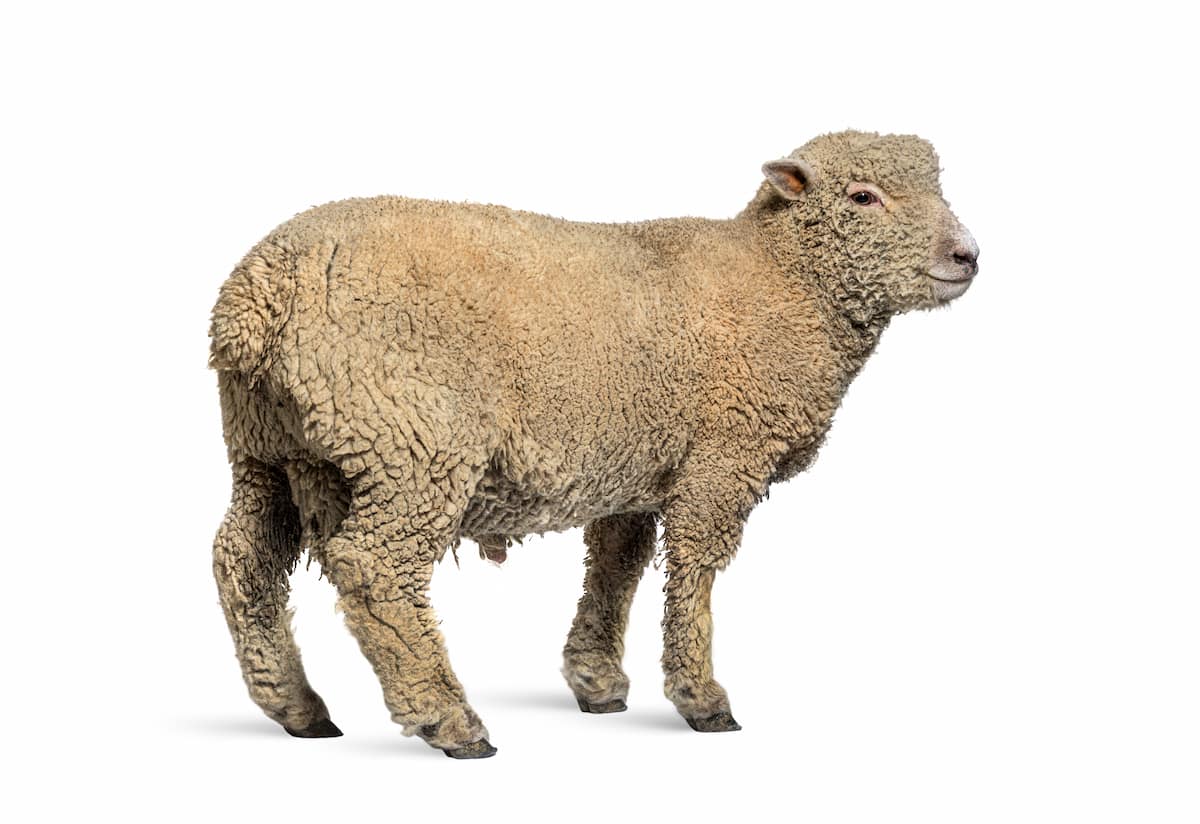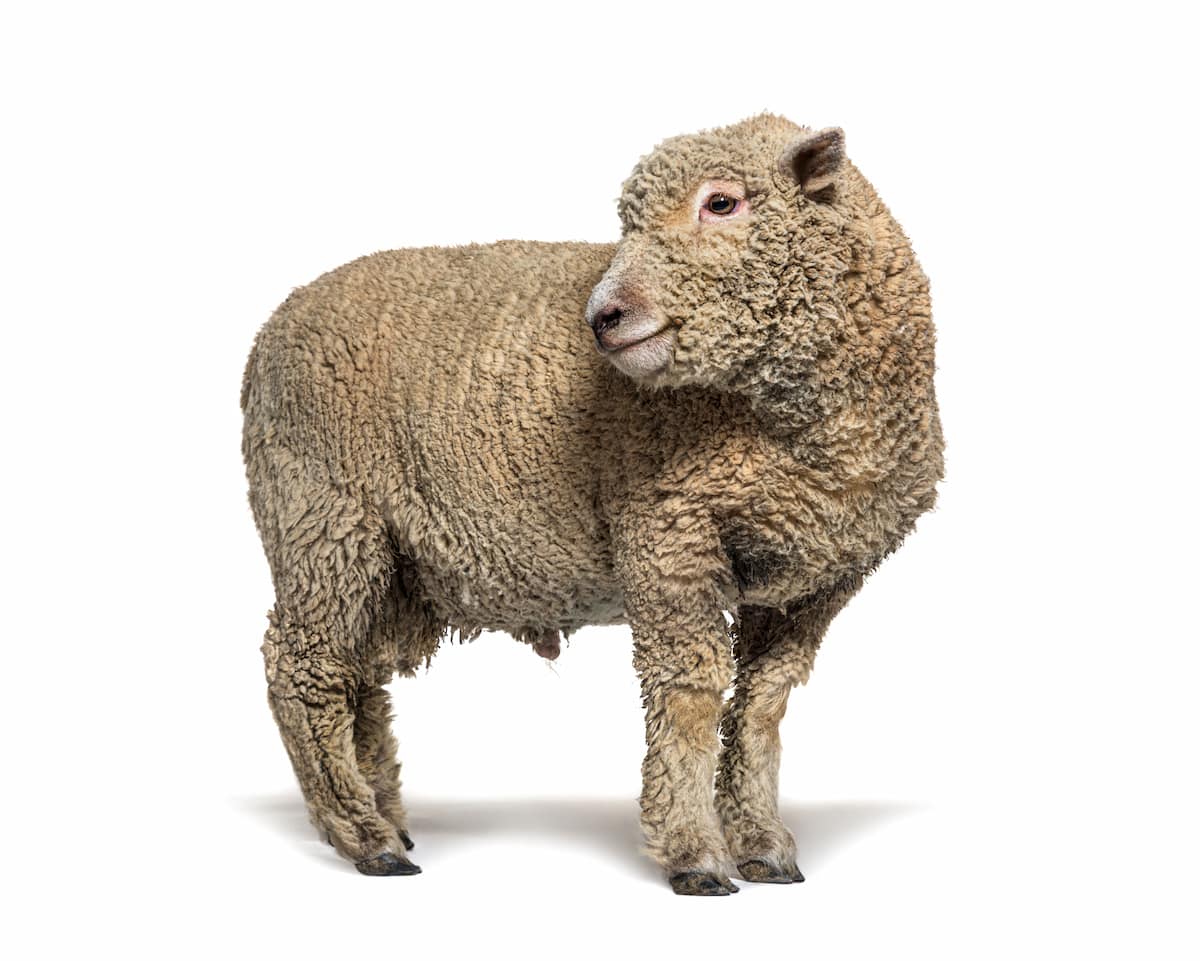Even though Southdowns are small in size, the fact that they produce high-quality meat makes them popular in the meat production industry due to their high-quality meat. The breed also reaches maturity earlier than most other breeds, which makes it a prolific breeder. Southdown sheep are also known for their hardiness. Their efficiency as foragers is also impressive. Because of this, they do not require much maintenance. Nevertheless, providing them with supplements improves the quality of their meat and stock.

Southdown Sheep Facts
History and Origin of Southdown Sheep Breed
Southdown sheep are domestic sheep from the United Kingdom that have dual purposes. Chalk Hills or ‘South Downs’ of Sussex were the areas where it was developed in southeastern England. During the late 1700s and early 1800s, it was developed. Historically, the breed has been one of Britain’s most important sheep breeds.
It is highly valued for its meat and fleece and for improving other sheep breeds. The region where the breed was developed has a mild climate, fertile soil, and good grass, making it an ideal place to raise sheep. In addition to its native area, the breed is available in other countries. In addition, it was shipped to New Zealand to breed the Canterbury lamb. Hampshire, Oxford, and Shropshire sheep breeds were developed from it due to its consistent qualities.
Physical Characteristics of Southdown Sheep
- There is no sign of a horn on its wide face. The nostrils are wide and full, with dark skin.
- It has large, bright eyes. With soft hair or short wool of similar color to its face and level with its poll, it has ears of medium size and thickness.
- Fleeces on the cheeks, forehead, and around the eyes should not be too long to obstruct vision.
- The neck is broad at the base and strong and short, with as few wrinkles as possible.
- Shoulders are well set, level with the back, well covered, not too heavy, and allow free movement.
- Its tail is broad, almost level with its spine.
- The legs of these animals are short and thick, with strong bones. From the front, their knees are square with their bodies.
- A wide, well-attached udder with two functional teats is characteristic of it.
- Its skin is delicate gray to bright pink on off-white sheep with no wrinkles.
- The wool is fine to medium, with a 4-6 cm staple length. Fleeces typically weigh 1.5-2.5 kg and have fiber diameters between 23 and 29 microns.
- The mature Southdown ram weighs between 86 and 104 kg as a medium-sized animal.
- A mature ewe’s live body weight ranges from 59 to 81 kilograms.
In case you missed it: Dorper Sheep Facts: Origin, Physical Characteristics, Size, Pros, and Cons

Basic Requirement for Rearing Southdown Sheep Breed
- Sheep and lambs can be protected from rain, sleet, snow, and wind with this 3-sided shelter
- A good pasture with improved grass per five ewes and their lambs, as well as a good predator-proof fence and possibly a livestock guardian dog.
- A place to store grain and hay
- A sheep-specific loose mineral supplement, hoof trimmers, and hand shears
- Standard care includes periodic hoof trimming, deworming, shearing, and vaccinations every year
- You can tame your sheep easily, walk them on leashes, and enjoy socializing with them if you handle them regularly.
- There should always be access to clean, fresh water.
- Mineral supplements should be specifically designed for sheep. Therefore, it won’t contain extra copper, which is toxic to sheep.
- Deworming pregnant ewes with Valbazen should be avoided during the weeks before breeding.
- It is never a good idea to feed old or moldy hay.
- It is always recommended that they be kept with fellow sheep since they are flock animals.
Advantages of Rearing Southdown Sheep
- The meat of Southdown Sheep is known for its tenderness and flavor. It has a good meat-to-bone ratio and is popular with chefs and consumers. Compared to other breeds of sheep, Southdown Sheep meat is lower in fat.
- Wool from Southdown Sheep is highly regarded for its quality and versatility. This crimp is soft, fine, and uniform, making it ideal for various textile applications.
- With proper care, Southdown sheep can live for 10 to 14 years
- Sheep of the Southdown breed are highly adaptable and thrive in various environments. Due to their hardiness and ability to withstand extreme weather conditions, they are popular among farmers and breeders worldwide.
- Sheep of this breed grow quickly and convert feed quickly
- Unlike other breeds, they don’t require as much land. Overall, they are a healthy breed
- It is easy to handle Southdown sheep because they have docile personalities
- The friendly and docile temperament of Southdown Sheep is one of their most attractive characteristics. Human interaction is one of their favorite things, and they are known for their affectionate nature.
Disadvantages of Rearing Southdown Sheep
- The Southdown breed is prone to being overweight, which may impact their mobility and yield if things get out of hand. A Southdown ewe tends to gain weight faster than a Southdown ram. Overweight ewes are less fertile and have difficulty lambing. Vigilance is required to keep them in good shape and fit for reproduction.
- Southdown sheep are very active and susceptible to flystrike (a painful condition caused by flies laying eggs on them). They have a small body structure, making it easier for flies to land on them and for larvae to hatch.
- Due to their size and polled nature, this breed is also vulnerable to predator attacks. To prevent damage to your sheep, you will need to ensure they are well-protected and monitored. A large fence and regular vet visits are necessary when keeping Southdowns.
- Shearing Southdown sheep is difficult due to the additional layers of hair on their head and legs. For flystrike prevention and other health reasons, shearing is necessary.
In case you missed it: Frequently Asked Questions About Sheep Farming

Conclusion
Despite their rapid maturation rate and ability to thrive in different climates, Southdown lambs are hardy and fast-growing. Southdown breeds produce a muscular, lightweight, and valuable carcass. In addition to being excellent mothers and good caregivers, Southdowns are often raised for meat production. Although Southdown sheep produce medium wool fleece, they primarily produce meat.
- Feed Your Flock for Less: Top 10 Tips to Save on Chicken Feed
- Ultimate Guide to Ossabaw Island Hog: Breeding, Raising, Diet, and Care
- Hatching Answers: The Top 10 Reasons Your Chickens Aren’t Laying Eggs
- Eggs and Economics: Breaking Down the Cost of Raising Backyard Chickens
- Defend Your Greens: Proven Methods to Keep Iguanas Out of Your Garden
- Ultimate Guide to Cinnamon Queen Chicken: A Comprehensive Guide for Beginners
- Ultimate Guide to California Tan Chicken: Breeding, Raising, Diet, Egg-Production and Care
- Ultimate Guide to Marsh Daisy Chicken: Breeding, Raising, Diet, and Care
- 10 Types of Chicken Farming Businesses You Can Start for Profits